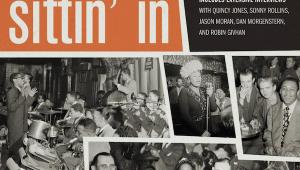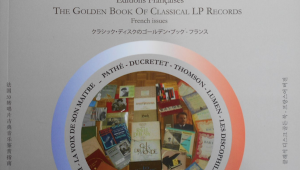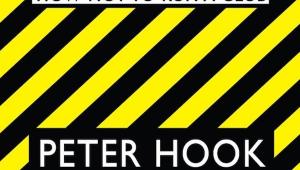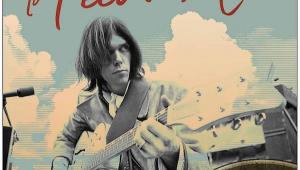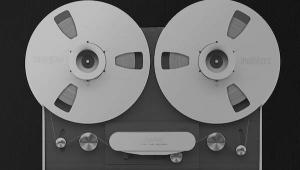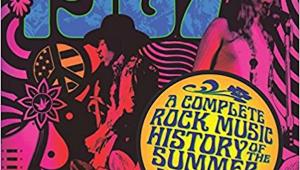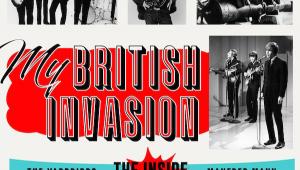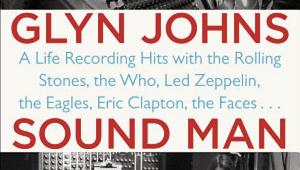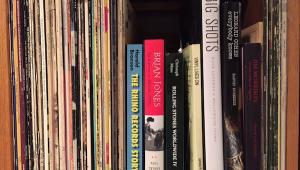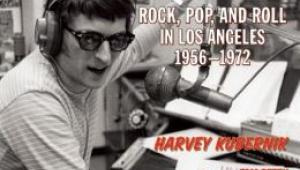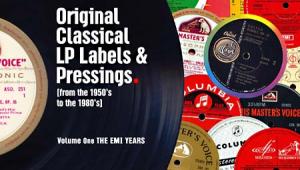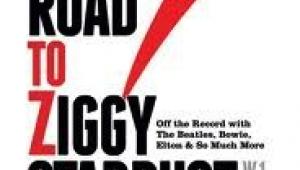Bayou Underground
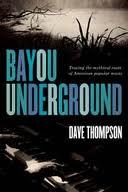
The vast majority of books about music are written either by music fans (that would include popular historians, journalists, and critics), academics (tenured faculty, independent scholars, self-taught historians), or authors who hold memberships in both camps.
The vast majority of those books adequately serve their purpose, either to excite the reader’s enthusiasm with “insider” stories and juicy details, or to stimulate the reader’s imagination through intensely researched narrative and scholarly commentary.
But there are very few books about music that entertain and inform us while independently meeting the standards of well-crafted literature, of story-telling and the kind of distinctive tone the general reader might find compelling, the kind of book capable of competing on its own merits with well-written accounts of public figures, influential artists, or key cultural movements.
The best of those books depend on the craft of writing to make the act of writing unobtrusive and the writer him-or herself only barely visible.
This is especially true of books that depend on casual, discursive essays to illuminate subjects with which we’re all familiar, whether it’s the way popular culture in general informs our sense of history or the way popular culture serves to inform our own sense of personal meaning.
In the best of those books, when a writer hits the right groove, combining a specific perspective with unexpected insights and surprising observations—all the while maintaining a seamless narrative flow and a reassuring informality— it feels as if writer and reader are involved in conversation sitting by a big picture window on a long-distance train, traveling through a foreign land, any foreign land.
Bayou Underground is definitely one of those books, a kind of rambling journey from Memphis to Houston by way of New Orleans and the Louisiana Gulf Coast in search of a sound that lives along the banks of the bayou, wherever that bayou may be found: in the voodoo history of New Orleans brothels, in the funky rhythms and nightmare imagery of Bo Diddley’s “Who Do You Love?” (“I’ve walked 47 miles of barbed wire, I use a cobra snake for a necktie, got a brand new house on the roadside and its made out of rattlesnake hides …”), or in the California-surfer version of bayou funk popularized by Credence Clearwater Revival.
The bayou, author Dave Thompson tells us, is an “oft-sinister land of creeping darkness and living shadows, secret legends and livid mythology. And music. Lots of music.”
The creeping darkness, in this case, tends to conjure up visions of vanishing local cultures, a worldwide phenomenon made painfully obvious to Thompson in the Americanization of life in Gulf Coast Louisiana, which, for him, represents the quietly disappearing heart of the bayou underground.
The living shadows remind writer and reader alike of the flickering nature of music, its unique ability to stir the mind and enflame the heart while mischievously dancing away from both written language and logical inquiry. Mostly for that reason, Thompson’s approach to storytelling takes on the guise of a loosely organized version of free association; his version of a literary “mix tape” with song titles standing in for chapter titles that sometimes announce the theme of the day’s journey, while others reflecting nothing more than “a flash at the back of the eardrum.”
In Thompson’s imagination, however, those flashes set off other flashes, and the actual journey traced by the book becomes a series of historical and cultural digressions— wandering day trips that always lead back to the assigned itinerary, even if by the most round-about way. And along the way, we learn more than we ever thought we could, even about subjects we might think we already know well, because Thompson has an amazing knack for stringing brilliant bits of knowledge together in ways the reader might not have thought possible.
He’s also got a great ear for the trenchant quote, a remarkable ability to snatch from the back of the archives an almost unbelievably obscure yet relevant fact.
In all the reading, listening, thinking, and even writing I’ve ever done that’s even been remotely associated with musician Mac Rebennack, otherwise known as Dr. John the Night Tripper, or just plain old Dr. John, I’ve never heard a better or more illuminating description of the good Doctor’s early excursions into voodoo/psychedelic rock than the one Thompson teases from the Doctor’s own lips: “We had a groove we was into then, riding around (Los Angeles) with candles and incense burning in the car. It wasn’t a hippy thing so much as a mixture or our own New Orleans mystical jive and the trappings of the old Beat scene.”
Go back and listen the quartet of albums Rebennnack made in the late 1960s and early 1970s— Gris Gris, Babylon, Remedies, and The Sun, Moon & Herbs—and that’s exactly what you’ll hear: the verbal ferocity of Kerouac and Ginsberg combined with rattling percussion, spooky chants, and languid, simmering funk.
And then there’s this riff where Thompson is talking about “Who Do You Love?” and happily informs us that even though Quicksilver Messenger Service back in the day (i.e. the Sixties) devoted the entire side of an LP to an extended jam on the tune, the real recorded gem is an even longer meditation on the same theme by a reunion version of the band taped live in New Orleans’ Quarter Note Lounge in July 1977, and recently released on a two-CD set.
Thompson applies the same method when he’s relating the history of a place connected to the sound he’s chasing in his head, whether it’s the connection between Bob Dylan’s “Highway 61” and the actual Mississippi Delta thoroughfare, the Animal’s version of “House of the Rising Sun” and New Orleans’ famed laissez-faire attitude toward pleasures of the flesh. That associative power also holds the narrative together from essay to essay.
By discursively explaining the kinship relation of Elvis Presley, for example, to Dr. John the Night Tripper, or The Animal’s “House of the Rising Sun” to Alice Cooper’s “Black Juju,” Bayou Underground does a terrific job of describing a transient sound that underlies an entire realm of pop music, connecting music to its physical and cultural context through a form of imaginary tourism that benefits both the reader’s pleasure of discovery and the formerly unrevealed nature of this particular strain of American roots music.
And did I mention it’s got recipes, too, for hummingbird cake, jambalaya, crawfish pie, filé gumbo, and beer-fried alligator? Hard to beat that for the price of admission.
In his introduction to Bayou Underground, Thompson credits Bayou Farewell by Mike Tidwell, among others, as a primary source of inspiration.

Both use the notion of a haphazard journey along the Louisiana Gulf Coast as narrative, and both attempt to convey the sights and sounds and local customs of an incredibly rich “culture zone” disregarded for the most part by readers both at home and abroad. Both books also share a sense of nostalgia for the vivacity of the local culture that once was there and sorrow for the slow disappearance of the culture that is still there now.
Tidwell’s book, on the other hand, is strictly about the loss of the natural environment and the marsh-borne culture it supports, a once-vibrant coastline slowly giving way to the open waters of the Gulf, disappearing at the rate of 25 square miles every year (a tennis court a second).
Easily the best book on this subject, Bayou Farewell takes the reader on a journey that, like Thompson’s, is both amusingly colorful and deliberately sobering.
But in fact, Bayou Underground reminds me more directly of two other pieces of writing, both casual and compelling conversations about the mysterious and fascinating process of musical evolution.
The first is an essay, “Hear That Long Snake Moan,” by Michael Ventura, that slowly winds its way back through the history of rock’n’roll to the mystical influence of spirit religions from Africa mixing with the European traditions of the New World.
Like Bayou Underground, “Hear That Long Snake Moan,” first published in 1985, is essentially a search for the soul of African American culture and the ways it shaped popular culture in the 1950s, 1960s, and 1970s.
I remember a friend in the early 1990s giving me a photocopy because it was out of print but continued to live on in the imaginations of those of us who find something more than entertainment in music. Happily (or maybe not – I think I liked the worn and deeply creased photocopy version better), the Internet has now made Ventura’s 32-page journey of the musical imagination readily available on the author’s Web site.
Bayou Underground also reminds me of It Came from Memphis by Robert Gordon, a collection of related, informal essays that have a funny way of sneaking up on the reader, unabashedly extolling the many happy eccentricities of popular culture in 1950s and early 1960s Memphis, with special affection for the 1950s’ circus-sideshow wrestling culture, as prelude to an affectionate history of the music scene on the fringes of the more-famous Memphis, where Elvis and Al Green, Sun Studios and Stax Records attract the spotlight.
 Instead, Gordon recalls the enduring presence of bluesmen from the 1930s mixing with the search for “authenticity” in the white, teenage underground, the same kind of alchemy that made Memphis a rockabilly/rock’n’roll/ soul music capital but also produced underground legends from musician/producer Jim Dickinson to (recently deceased) vocalist Alex Chilton (The Box Tops, Big Star) and bands known only as hometown favorites, like Mud Boy and the Neutrons.
Instead, Gordon recalls the enduring presence of bluesmen from the 1930s mixing with the search for “authenticity” in the white, teenage underground, the same kind of alchemy that made Memphis a rockabilly/rock’n’roll/ soul music capital but also produced underground legends from musician/producer Jim Dickinson to (recently deceased) vocalist Alex Chilton (The Box Tops, Big Star) and bands known only as hometown favorites, like Mud Boy and the Neutrons.
But easily the best (and certainly the most enduring) collection of casual essays illuminating the spectral nature of music and the life of the professional musician is Mitchell & Ruff: An American Profile in Jazz(originally published in 1984 as Willie and Dwike: An American Journey) by William Zinsser. A highly regarded writer and teacher (check out On Writing Wellif you’re even the least bit interested in the craft of writing), Zinsser is primarily interested in exploring how you learn to play jazz, the most evanescent of all popular American musical genres.
His interest in teaching and learning comes naturally—he’s a writing teacher himself; he taught at Yale during the 1970s with Willie Ruff, master French horn player and bassist; and he’s studied jazz piano and improvisation with master pianist Dwike Mitchell. (Never heard of the world-famous Mitchell-Ruff Duo? Check out Dizzy Gillespie & the Mitchell-Ruff Duo, Vol. 1-- you’ll be amazed.)
In seven compact chapters, Zinsser explores both musicians’ early life and musical education, traveling with them on concert tours and to recording sessions. The book begins with a teaching workshop at the Shanghai Conservatory of Music and ends with a trip to Venice where Willie Ruff records Gregorian chants on French horn in the sublime acoustic environment of St. Mark’s cathedral.

Throughout, Zinsser pursues one of the most elusive of all subjects: how does a jazz musician become a jazz musician? Or more precisely, how is it possible to create music on the spur of the moment building off music that already exists and playing within the context of a set of firm, but largely unwritten, laws of music?
The only way to get atthe subject, of course, is by circumventing it, by wandering around its periphery, catching occasional glimpses of its inner secrets.
Zinsser sets out his premise, lays out his proposed itinerary, in his observations of the Shanghai Conservatory of Music session, concluding with one of the more telling passages in any book written about music and musicians.
After providing the class with a whirlwind tour through the history of African-American music—rhythm from Africa, harmonies from Europe, the two combined in ragtime compositions, blues, and improvisations on jazz standards—Ruff entertains questions from the Chinese students.
Naturally, what they really want to know about is the practice of improvisation, a form of spontaneous composition completely foreign to Chinese musical traditions that fascinates these young Chinese music students: was it really possible, a student wanted to know, to improvise on any tune—even one the musicians had never heard before?
Ruff’s reply was casual. “I would like to invite one of the pianists here to play a short Chinese melody that I’m sure we would not know,” he said, “and we will make a new piece based on that.”
The room erupted in oohs and cheers. I caught a look on Mitchell’s face that said, “This time you’ve gone too far.”
The students began to call the name of the young man they wanted to have play. When they found him in the crowd he was so diffident that he got down on the floor to keep from being dragged out. But his friends dragged him out anyway, and, regaining his aplomb, he walked to the piano and sat down with the formality of a concert artist. He was about twenty-two. Mitchell stood at one side, looking grave.
The young man played his melody beautifully and with great feeling. It seemed to be his own composition, unknown to the other people. It began with four chords of distinctly Chinese structure, moved down the scale in a stately progression, paused, turned itself around with a transitional figure of lighter weight, then started back up, never repeating itself and finally resolving the theme with a suspended chord that was satisfying because it was so unexpected.
It was a perfect small piece, about fourteen bars long. The student walked back to his seat and Mitchell went back to the piano. The room got very quiet.
Mitchell’s huge hands hovered briefly over the keys, and then the young man’s melody came back to him. It was in the same key; it had the same chords, slightly embellished near the end, and, best of all, it had the same mood.
Having stated the theme, Mitchell broadened it the second time, giving it a certain majesty, coloring the student’s chords with dissonances that were entirely apt; he gave the “Chinese” chords a jazz texture but still preserved their mood.
Then Ruff joined him on his bass, and they took the melody through a number of variations, Mitchell giving it a whole series of new lives but never losing its integrity.
I listened to his feat with growing excitement. For me it was the climax of years at marveling at his ear and at his sensitivity to the material at hand. The students were equally elated and astonished. For them it was the ultimate proof— because it touched their own heritage —that for a jazz improviser no departure point is alien.
Later I told Mitchell that I thought Ruff had given him an unduly nervous moment when he invited the student supply a melody.
“Well, naturally I was nervous,” he said, “because I didn’t have any idea what to expect. But, you know, that boy phrased his piece perfectly. The minute he started to play I got his emotions. I understood exactly what he was feeling, and the rest was easy. The notes and chords just fell into place.”
“I understood exactly what he was feeling, and the rest was easy. The notes and chords just fell into place.” I doubt there’s a better, or more concise, explanation of the mysterious power of music over human existence in all the volumes of writing about music and musicians that have been, or will ever be, published. “I understood exactly what he was feeling, and the rest was easy.
And the rest was easy.
* * *
P.S. (A Self-Indulgent Postscript):
Coming Through Slaughter
Michael Ondaatje, Knopf Doubleday, 160 pages, $14.00

Been Here and Gone: In Search of the Blues,
Marybeth Hamilton, Basic Books, 320 pages, $15.95

Remembering Song: Encounters with the New Orleans Jazz Tradition (Expanded Edition)
Frederick Turner, Da Capo Press, 440 pages, currently out of print

Song for My Fathers: A New Orleans Story in Black and White
Tom Sancton, Other Press, 336 pages, $14.95

I’d be remiss—since I presumably already have your attention—if I didn’t include in this argument for really good writing about music, writing you can recommend to friends who aren’t already devout music fans, some outstanding writing about the traditional New Orleans jazz revival.
Suffice it to say that I’ve lived in New Orleans for 15 years, and that I didn’t move down here, really, for any logical or sane reason. There’s a longer version of this explanation—about how the New Orleans jazz revival actually represents the first “roots” revival in American popular music, and how the idea, the spirit, of revival has shaped the landscape of popular American music ever since—but I’ll spare you that for now.
Let’s just leave it at this: traditional New Orleans jazz, the stuff they play at Preservation Hall, the stuff Woody Allen is in love with, the stuff that sounds like Dixieland but a whole lot funkier and slightly more disorganized, has attracted more attention over the years (especially if you count worldwide audiences) than any other noncommercial music on the planet. So naturally there’s been a lot of writing about it.
That writing begins with the earliest forms of jazz history, continues through a post-WWII critical feud over the relative merits of New Orleans jazz and the emergent form of modern jazz called bebop, and continues with inquiries into the mystery of where New Orleans jazz came from and why it holds such a spell over audiences all around the world more than a century later.
The best guess at where New Orleans jazz came from, perhaps appropriately, is a work of fiction, a biographical prose poem, to be more precise, about Buddy Bolden, a trumpeter who is to New Orleans jazz what Paul Bunyan is to American folklore, except that Buddy Bolden actually lived.
But that’s really all we know about him. For many decades, the main attempt to document the origins of New Orleans jazz— and by extension, American jazz—was to collect oral histories. (Makes sense: early jazz was mainly black music that emerged during a time in America when blacks mostly lived lives outside the conventions of recorded history.) And the one name that kept echoing like a trumpet call throughout those oral histories, especially on the topic of the first musician to ever play jazz, was: Buddy Bolden … Buddy Bolden … Buddy Bolden.
And here’s the best part: the only thing we reallyknow about Buddy Bolden is that he went crazy, sat down one day during a parade through the streets of New Orleans, and never played another note.
As far as records go, the historical evidence from those times is pretty slim, but one thing we know absolutely for certain: Buddy Bolden was committed to the Louisiana State Insane Asylum sometime in 1907 with a diagnosis of dementia praecox (which covered a wide range of bizarre behaviors back then) and died there on November 4, 1931. He was thought to be 30 years old when committed, which would make him 54 when he died. Other than that: nada. There colorful tales, all kinds of rumors, plenty of educated guesses. But if you just take it on face value—the first man to ever play jazz went insane playing it—you’ve got a pretty good story.
And that’s exactly what Michael Ondaatje thought when he spent some time in New Orleans in the mid-1970s looking into the particulars of Buddy Bolden’s life.
Fresh from the publication of a prose-poem biography of Billy the Kid, Ondaatje was a young writer looking for material, and obviously interested in the outlaw mythology of American history.
What better subject than Bolden, the first jazz cat, the first insane jazz cat, the founder, the originator of crazy American jazz? Ondaatje would later go on to write bigger and more complex, more sophisticated novels (The English Patientwas famously made into a long, complex, sophisticated movie), but in the mid-1970s he was in a more poetic mood and so he absorbed all the poetic myth surrounding Buddy Bolden and the birth of jazz he could lay his hands on.
What resulted is easily the best piece of writing on New Orleans jazz ever, maybe the piece of writing about American popular music ever, an evocative, free-form assault on the state of mind required to explore previously unexplored creative frontiers.
The academy of formal jazz historians will tell you today, of course, that Ondaatje got it all wrong, Buddy Bolden never did this, and he never did that, but it’s clear Ondaatje knew exactly what he was doing, breathing poetic life into essential American mythology. And it’s clear, as well, he understood hard-and-fast facts about Bolden really didn’t exist.
One way we can tell is from the book’s title, Coming Through Slaughter. On the one hand, a colorful evocation of the book’s theme—you may have to pay a truly exorbitant price for true creative exploration—but on the other, the title is a play on the scarcity of real facts. If you drive from New Orleans to the insane asylum in Jackson, Louisiana, just north of Baton Rouge, you have to take State Road 19, which goes straight through the tiny town of Slaughter, Louisiana.
Why do we even know about Buddy Bolden? Because a bunch of crazy and obsessed guys in the 1930s started collecting old jazz and blues records, then decided, with the storm clouds of WWII darkening the horizon, to document the origins of jazz and even the “discipline” of what they then called “hot” record collecting.
Their research produced the first real work of jazz history, Jazzmen: The Story of Hot Jazz Told in the Lives of the Men Who Created It, and unearthed the existence of an old trumpeter said to have played with Buddy Bolden.
He was resurrected, some of his music pals were resurrected, and the “revival” that followed eventually led to the early 1960s founding of Preservation Hall, the first and, really, only shrine to the semi-religion of New Orleans jazz.
The story of those early collectors is told by Marybeth Hamilton in her recent book, In Search of the Blues, a series of lively, discursive essays built mainly around the characters, mostly record collectors, who helped perpetuate the acoustic blues revival of the late 1950s and 1960s.
She’s really the first historian to connect the Sixties blues revival with the earlier New 0rleans jazz revival—essentially connecting the legacy of Robert Johnson back to the legacy of Buddy Bolden in a plot line that could, conceivably, project itself forward through the continuing legacies of Sid Vicious, Grandmaster Flash, and the electronic Miles Davis.
But that’s another story for another day. (Note: a site glitch prevents for now publication of full story....more to come)
Finally, there are two books that provide intimate outside and inside views of Preservation Hall.
Remembering Song: Encounters with the New Orleans Jazz Tradition by novelist Frederick Turner is a 1982 series of essays in the form of a travelogue/social history. It’s the first book to step back and put that whole scene in perspective, then step forward in an attempt to better understand it by getting to know the musicians and the Hall’s founding father, Allan Jaffe.
By taking an outsider perspective, Turner gives the average reader a sort of promontory view complete with an insightful commemorative plaque, then brings the reader in close contact with the living legacy, explaining what it felt like trying to get to know the Hall’s founder and the musicians who gave it life.
In many ways, it’s not the perfect introduction to the mystique of New Orleans jazz, but a terrific guided tour through the entire neighborhood of the New Orleans musical legacy.
Song for My Fathers: A New Orleans Story in Black and White, by Tom Sancton, a New Orleans native and former Timemagazine Paris bureau chief, is a very different kind of book than Turner’s, but it inhabits almost exactly the same cultural and spiritual space.
In Sancton’s case, the story is told from the perspective of an average white teenager whose father, a New Orleans newspaperman, gradually morphs into a bohemian eccentric, but not before taking his son, who has developed an interest in playing music, down to meet “the mens” at Preservation Hall to arrange for some clarinet lessons.
Written many years later, Sancton vividly recalls the exotic atmosphere of the Hall as well as his own adolescent discomfort at being a well-to-do kid with a crazy father and who is now surreptitiously taking lessons -- life lessons, he later comes to understand—from old Negro men at a time in the early 1960s when New Orleans, like a lot of the South, was still adamantly segregated.
Song for My Father is beautifully written, and specifically, written in chapters that assume the contours of a well-played New Orleans jazz solo, never varying far from the initially stated theme, but never ending on it, either.
In that way, it resembles all the books listed here, relying on good writing to offer general reader and devoted music fan alike the rare opportunity to travel through an intoxicating foreign land accompanied by a well-informed but unobtrusive guide, taking the reader on a journey that ultimately benefits both the reader’s inner life and the true nature of the musical subject at hand.
End

